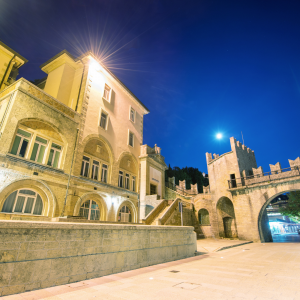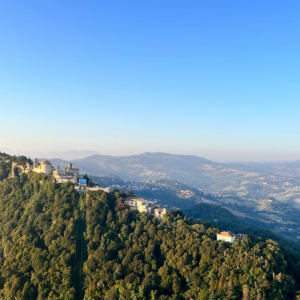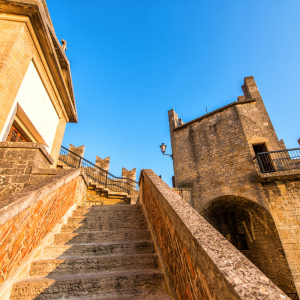Discovering one of the world's oldest and smallest jewels: the Republic of San Marino
Look at the small things because one day you’ll turn back and you’ll understand they were big.
(Quote by J. Morrison)
After Vatican City and the Principality of Monaco, the Republic of San Marino has earned a well-deserved third place on the podium of the smallest states in Europe.
But let’s not stop at its size, because an area of 61 square kilometres just over 10 kilometres from the Adriatic coast, boasts no less than three sites inscribed on the UNESCO World Heritage List: its historic centre, Borgo Maggiore and Mount Titano.
Today’s trip to this small Republic is a journey through its nine castles, of which the Castle of San Marino is the capital.
But together, let’s see them one by one with the awareness that each of these nine fortresses contains something unique and exciting to discover.
The Castle of San Marino
The origins of this castle bring to mind the famous legend of the Founder Saint of the San Marino community who, in 301 AD, took refuge on Mount Titano.
This small Capital contains museums and an historical and architectural heritage of inestimable value. During the year it is always bustling with tourists who crowd its pedestrian centre and indulge in shopping among the numerous craft and souvenir shops.
The Castle of Serravalle
The Castle is mentioned for the first time in the famous diploma of King Otto, in 962. At its origins it was also a Malatesta outpost annexed to the Republic in 1463. Having become an important urban centre, the area near the fortress offers tourists a lovely centre with some truly characteristic districts.
The Castle of Borgo Maggiore
Ancient market since 1244, the area near the castle is of particular historical interest for its churches, monuments and the characteristic districts of the historic centre, included in the UNESCO World Heritage List.
It is an area that has ample parking and a quick connection, thanks to the cable car, with the historic centre of the Capital.
The Castle of Faetano
Originally, it was an ancient domain of the Malatesta family of Rimini and was one of the last territories annexed to the Republic in 1463. The centre of the village is interesting for the Church, whose construction dates back to the last century, and the Castle House. Faetano is an ideal destination for outdoor excursions, thanks to its proximity to the Marano River and the presence of a small lake set up for sport fishing.
The Castle of Domagnano
Domagnano has been a small village as far back as the fourteenth century. In 1463, the fortress of Montelupo was annexed to its territory, conquered by the forces of San Marino after the war against the Malatesta of Rimini. The area is also known for its spectacular viewpoints that offer enchanting views of both the sea and Mount Titano.
The Castle of Chiesanuova
Chiesanuova originates from the medieval castle and court of Busignano. It presents a landscape of particular beauty for the natural environment and is nestled on the first Apennine spurs of San Marino.
The Castle of Fiorentino
An ancient Malatesta fortress, Fiorentino was annexed to the Republic of San Marino in 1463. It is an archaeological area rich in important finds. This fortress is perfect for easily reaching various cities such as Cattolica, Pesaro, Urbino and San Leo.
The Castle of Montegiardino
The origins of Montegiardino date back to the Lombard era. Annexed to the Republic in 1463, Montegiardino is home to an ancient and fascinating castle, which has architecture and views of rare beauty. The nineteenth-century church is also interesting for the altar frontals kept here, which date back to the previous century.
The Castle of Acquaviva
With medieval origins, Acquaviva owes its name to a spring of water flowing from the living rock. Today it is a charming village, surrounded by the green of the surrounding countryside. The natural park of Mount Cerreto is the perfect spot for jogging and other sport and recreational activities.
Among the traditions of this area, it is worth mentioning the ancient tradition of the crossbow, today perfectly documented and promoted by the San Marino Crossbowmen Federation.
The Federation, founded in 1956, is made up of four groups - musicians, flag-wavers, extras and shooters - and is known and appreciated even beyond the borders of San Marino, thanks to performances in the numerous squares in Italy, Europe and throughout the world.
It has promoted the image of San Marino everywhere, bringing with it those messages of peace and freedom so dear to the citizens of the small and ancient Republic.
For info, contact the Tourist Office
www.visitsanmarino.com
Via Paolo III, 1
47890 - Rep. of San Marino
info@visitsanmarino.com
tel. +378 (0549) 882914
fax +378 (0549) 882575



